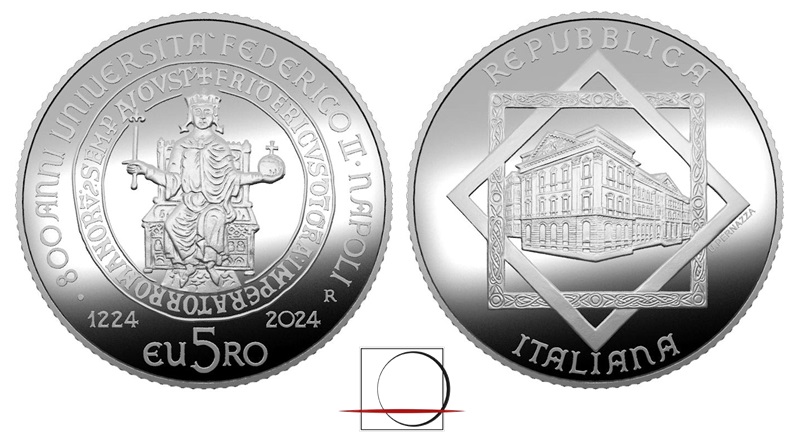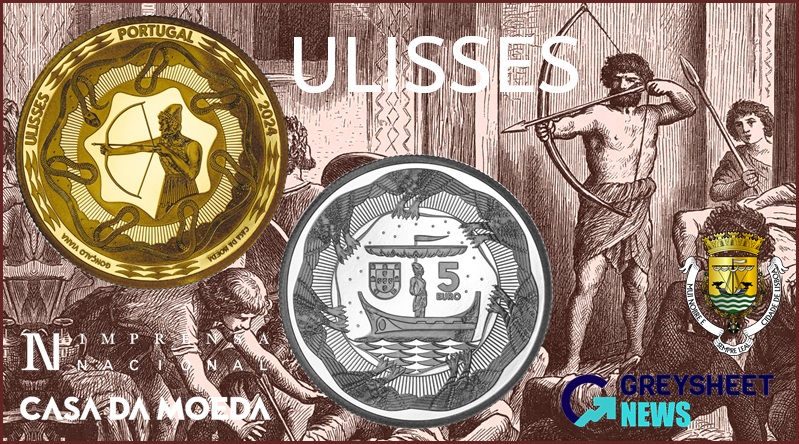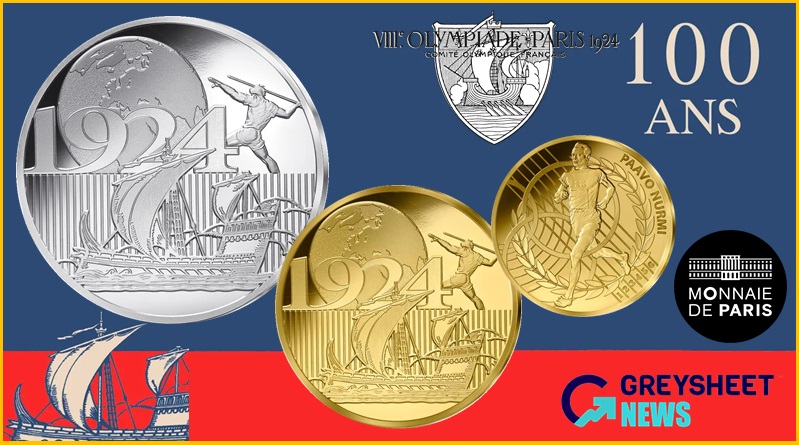Italy: New Proof Silver Coins Released To Celebrate The University Of Naples 800th Anniversary
The IPZS have released new silver proof quality coins in celebration of the 800th anniversary of one of Italy’s oldest universities.
The L'Università degli Studi di Napoli Federico II is also one of the oldest universities to be founded by a head of State while other educational institutions were mostly the result of private initiatives. Frederick II – Federico II (1194 – 1250) was King of Sicily from 1197 until his death in 1250 but also held the titles of Duke of Swabia and Holy Roman Emperor from 1220. By joining in the Sixth Crusade in 1228 and conquering several areas of the Holy Land, he crowned himself king of Jerusalem in 1229 until 1243. By founding an institute of higher learning in the southern region of Italy, Emperor Federico II’s objective was to put an end to the predominance of the universities of northern Italy, most notably those of Bologna and Padua, which were considered either too independent, progressive or under the strong influence of the Papacy.
With the granting a royal charter to the new university, a certain level of independence was retained but Emperor Federico still exercised the highest authority with regard to curriculum and professors whom he hired personally. As such, they became royal employees paid personally by Federico II. Moreover, the Emperor himself scrutinised the university’s potential students and granted them their degrees himself. Consistent with this rather rigid and centralised establishment, students and academic personnel were not allowed to travel or study elsewhere. Graduates were required to vow their loyalty to their King and Emperor which meant that they were to lecture only at the University for a minimum of sixteen months. The foundation of scholarships to the university was carried out within the framework of an administrative reform pursued by the Emperor with the objective of training bureaucrats who would remain loyal to him as well as becoming capable of monitoring local nobles whom he distrusted. Thus, a strong motive was established to create a political tool for Federico II so that he could pursue his policies, particularly of counteracting papal influence. However, Frederick’s love for higher learning was an equally strong motive. Remarkably, during the Emperor’s own reign, the university was closed down and was ‘re-founded’ on two separate occasions in 1234 and again in 1239. After Emperor Frederick’s death, the university lost much of its royal splendour and faced a period of severe instability when it was closed and reopened by the successive rulers of Naples. Austria’s brief occupation of Naples from 1707 until 1734 was characterised by an upsurge in academic activity that continued during the Bourbon dynasty beginning with Charles III. The university regained its role as the only centre of higher education in the southern peninsula though the Kingdom of Sicily had its own separate universities.
By 1860, the university included six departments focusing on Theology, Law, Arts, Medicine, Mathematics and Natural Sciences. Following the unification of Italy in 1861, together with the Law of 1877, which conformed the University of Naples into the general structure of Italian universities as specified by the Casati Law of 1859, enabled the institute to emerge intact into the beginning of the 20th century. The central university building that dominates Corso Umberto I was completed in 1912 and during the years of World War II, the university did not undergo severe damage. Today, The University of Naples Federico II has over 2000 reciprocal agreements with foreign universities. It is made up of four schools, twenty-six departments, an academic staff of more than 3,000 individuals and an administrative staff of more than 4,500. Current student enrolment is an impressive 100,000 total, making the University of Naples one of the largest in the country.

The silver coins struck to Brilliant Uncirculated quality are designed by Uliana Pernazza who has featured on the obverse, the historic insignia of the University of Naples which includes a seated figure of Emperor Federico II centred. Around the seal is the commemorative stylised text 800 ANNI UNIVERSITÀ FEDERICO II NAPOLI (800th Anniversary of the University of Naples Federico II) Just under the seal are the commemorative years 1224 and 2024 along with the coins’ face value shown as EU 5 RO and the letter R placed over the year of issue denoting the Mint of Rome. The reverse side features a perspective contemporary view of the headquarters of the University of Naples, Federico II which is enclosed within a decorative motif inspired by the tympanum of the main facade of the Palace which houses one of the oldest universities in the world. Above and below the primary design is the text the REPUBBLICA and ITALIANA. Just to the right and along one of the bars of the tympanum is the name of the designer, U. PERNAZZA.
| Denomination | Metal | Weight | Diameter | Quality | Maximum Mintage |
| 5 Euro | .925 Silver | 18 g. | 32 mm. | Proof | 8,000 |
Available from the 31st May, the BU quality coin is encapsulated and presented in a custom coin case with side magnetic closure. For additional information, please visit the e-webshop of the IPZS.

Download the Greysheet app for access to pricing, news, events and your subscriptions.
Subscribe Now.

Subscribe to CPG® Coin & Currency Market Review for the industry's most respected pricing and to read more articles just like this.
Author: Michael Alexander












Please sign in or register to leave a comment.
Your identity will be restricted to first name/last initial, or a user ID you create.
Comment
Comments